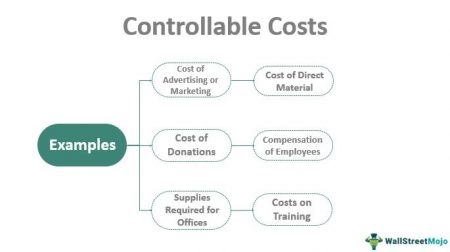
Controllable Cost Examples.Controllable costs: they are all those that are capable of being regulated and controlled at a given level of production and of applying a corrective action in case of detecting a deviation by an administrative authority, being able to directly identify with a level of authority or group of workers.

Summary
[ hide ]
- 1 Definition
- 2 Controllable and uncontrollable costs
- 3 Manufacture of a product
- 4 Sources
Definition
They are those that can be directly influenced by the unit managers in a certain period. For example, where the proxies have the authority of acquisition and use, the cost can be considered controllable by them.
What Is The Diffrence BetweeControllable and uncontrollable costs
- Controllable Costs: They are those on which they can exert direct influence on managers during a certain period of time.
- Uncontrollable Costs: These are those costs that are not directly managed by a certain level of management authority.
- Authorized costs: They are related to the property, plant, equipment, salaried personnel indispensable in the long term.
- Discretionary costs: Related to repair and maintenance, advertising costs, short-term executive training.
Manufacture of a product;Controllable Cost Examples.



The controllable costs in the manufacture of a product , according to the standard that it has, could not be increased in its unit indicator, only in the total number of units to be produced, maintaining the unit consumption per product which can be perfectly controlled by the person responsible for the area, so that this does not exceed the norm.
Controllable costs should include any costs that are influenced by the decisions and actions of a manager. For example, the costs of the mail order information system, while uncontrollable by the mail order supervisor, are controllable by the administrator in charge of the information systems.
In a sense, the term “controllable” is misused because no cost is entirely under the control of one manager. However, the term is widely used to refer to any cost that is affected by the manager’s decisions, even if he or she does not fully “control” it. Consequently, the cost of operating the mail order information system can be affected by equipment or software failures that are not entirely but partly under the control of the information systems administrator, who considers himself as the person in charge of all the costs of the information system, even the costs of the time in which it remains without operating.
The distinction between controllable and uncontrollable costs serves an informational purpose. Costs that are completely uncontrollable tell us nothing about the manager’s decisions and actions because, by definition, nothing the manager does will affect those costs. Such costs should be ignored when evaluating the performance of the area manager or responsibility center. On the contrary, the report of controllable costs provides evidence of the manager’s performance.
10 Controllable Cost Examples You Must Know
All costs are controllable at some management level. For example, top management has authority to dispose of facilities and increase or decrease the number of managers employed. However, not all costs can be controlled at lower management levels, so there is a need for costs to be classified into their controllable and non-controllable categories- in the performance reports that the accountant prepares for each responsibility center. If costs were not classified.
in this way, it would be difficult to evaluate a manager’s performance. In addition, managers would soon lose interest in cost control if they found that their performance was being judged on items that were outside their control. A controllable cost may be defined as a cost that is reasonably subject to regulation by the manager with whose responsibility that cost is being identified. If this condition does not hold then clearly the cost should be classified as non-controllable by the manager of the responsibility center. In addition to classifying costs into their controllable and non-controllable elements, a detailed analysis of controllable costs is necessary so that the responsibility center manager and his superior can pinpoint those costs that do not conform to plan.
Leave a Reply